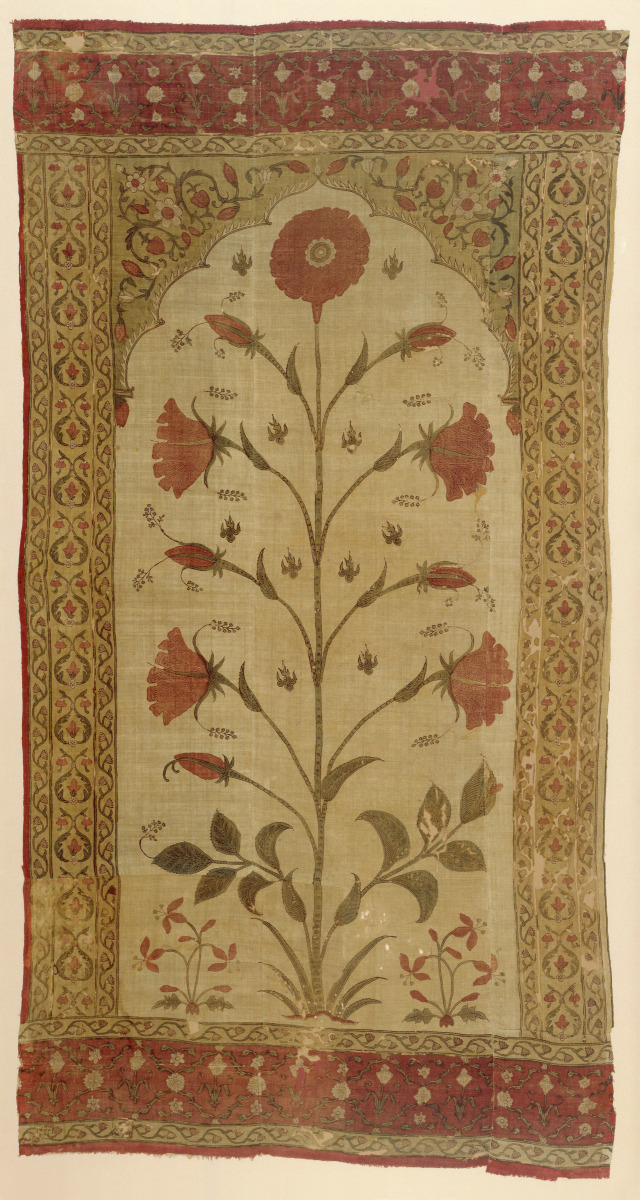
Tent Hanging (Qanat) (Primary Title)
Unknown (Artist)
The Mughal emperors were descendents of Central Asian nomads, accustomed to living in soft, portable architecture. Housed in grand tent cities, the imperial court moved between multiple capitals, visited the provinces, and followed war campaigns. Tents were made for every conceivable purpose, and many of them were lavishly decorated. This impressive block-printed and hand-dyed textile is a section of a tent wall or canvas enclosure known as a qanat. A series of these panels would have been sewn together, and the fabric wall would
have appeared as a running arcade of large, flower-filled niches. This panel may have belonged to a Mughal ruler or to a provincial potentate.
Some object records are not complete and do not reflect VMFA's full and current knowledge. VMFA makes routine updates as records are reviewed and enhanced.
